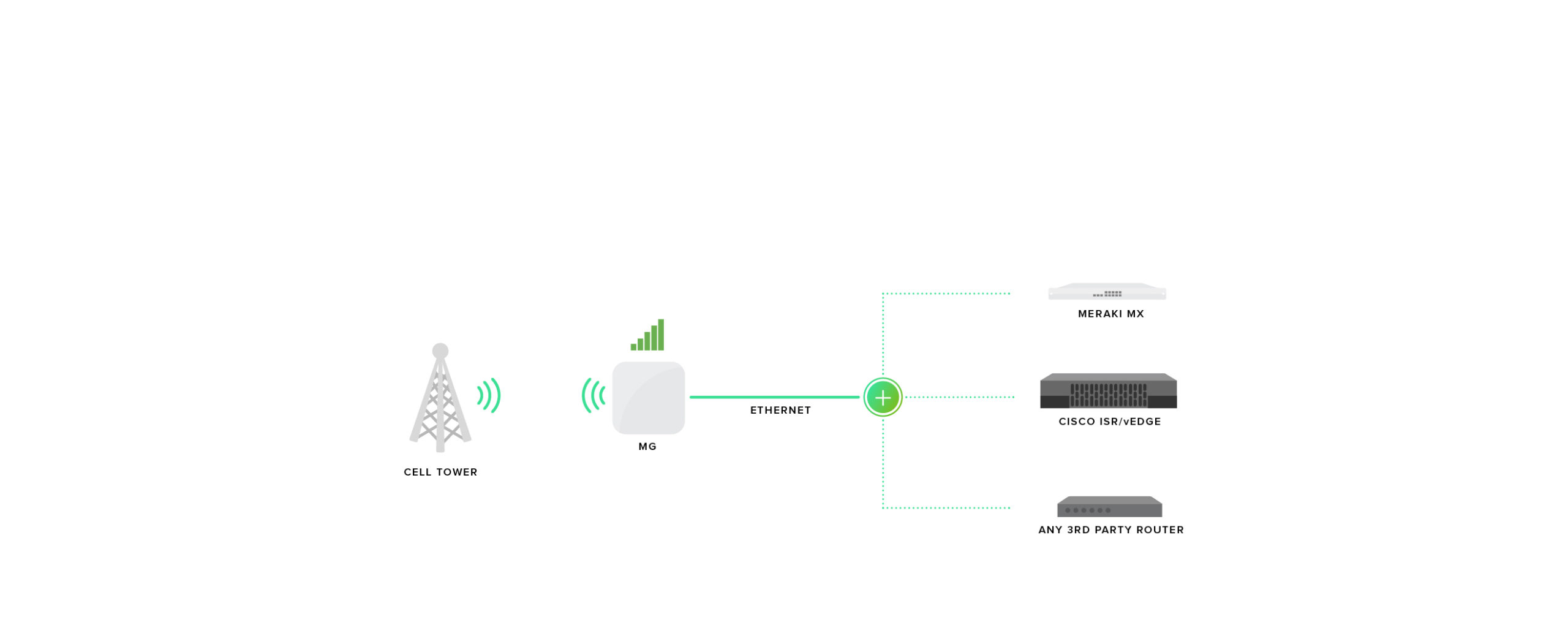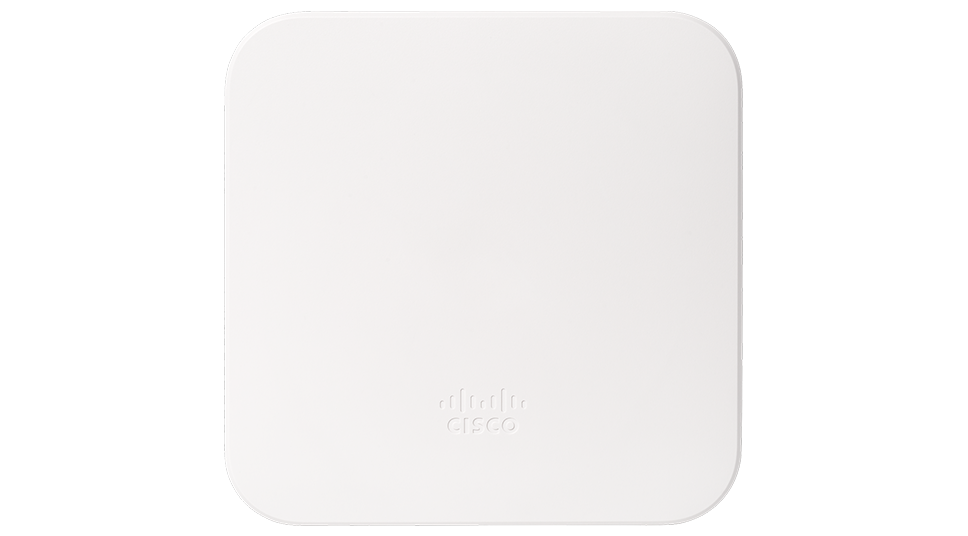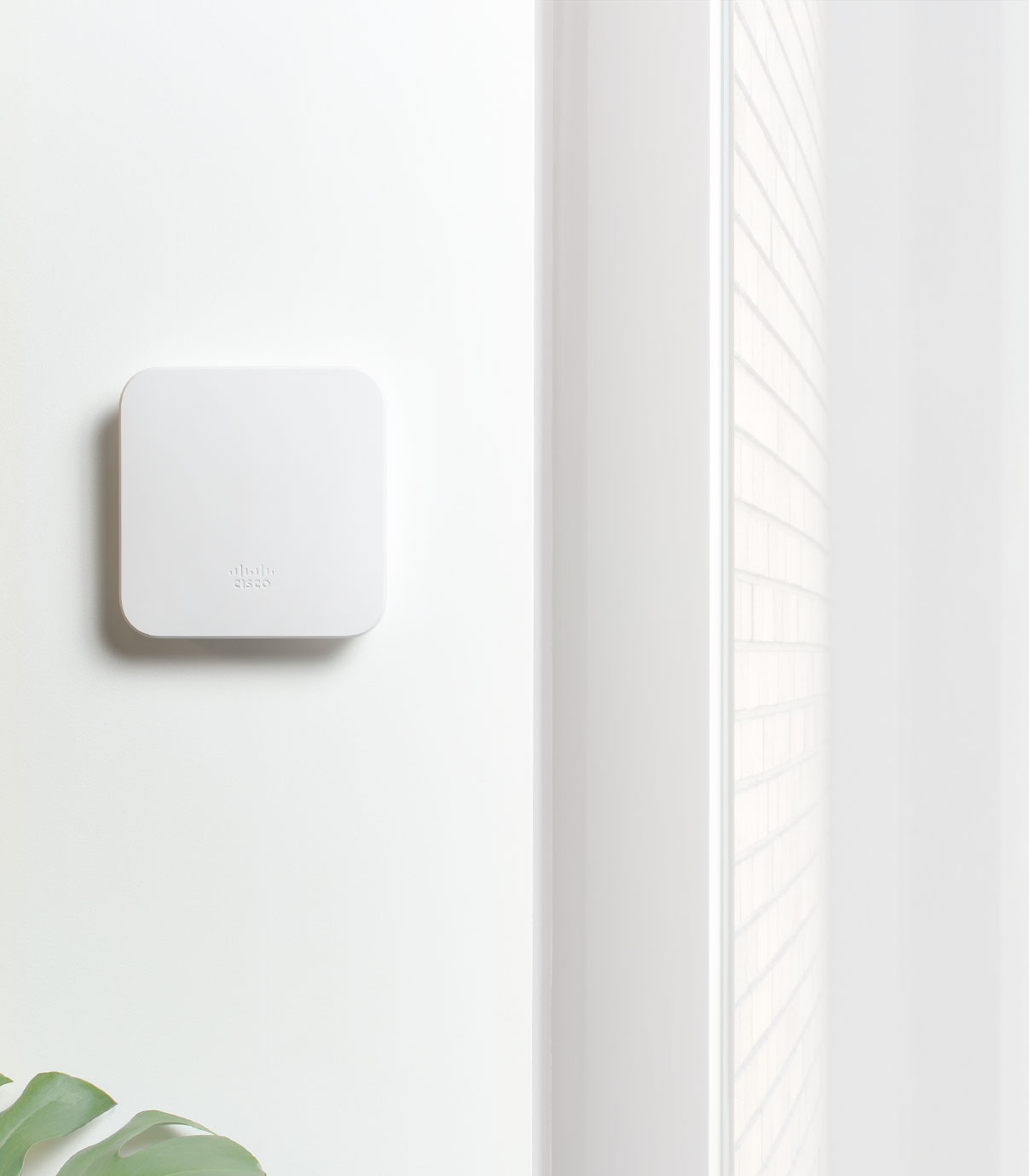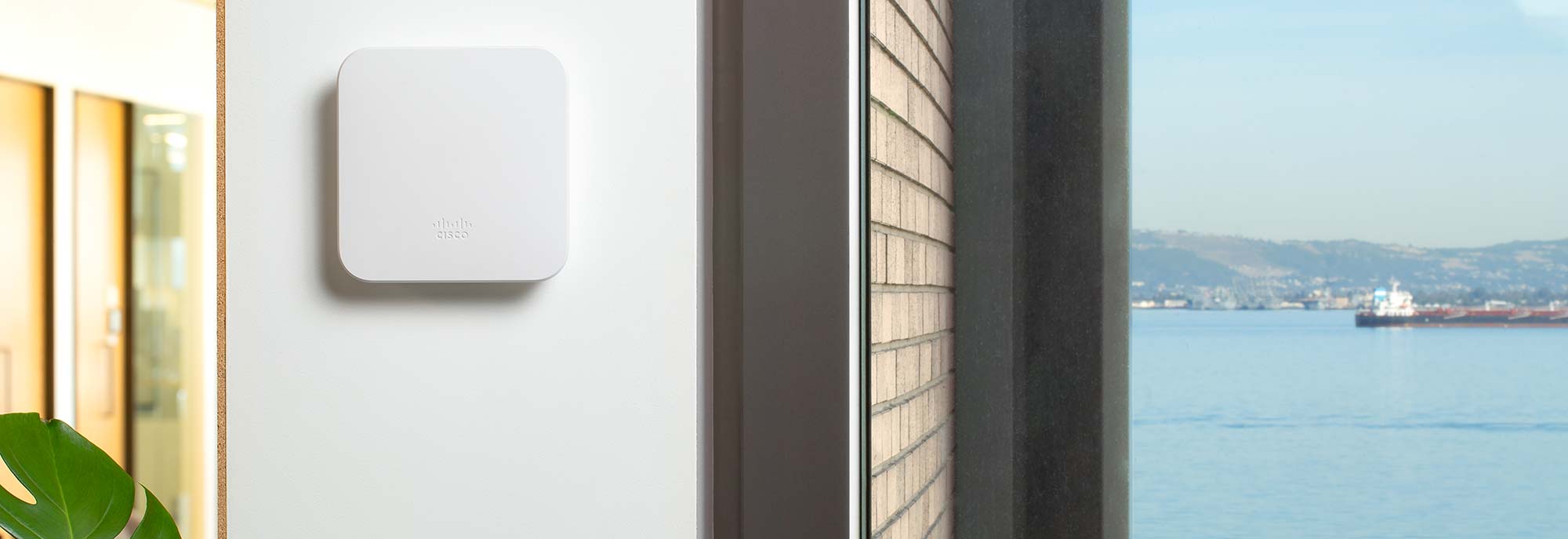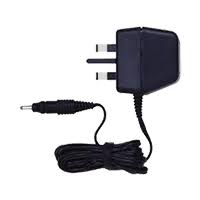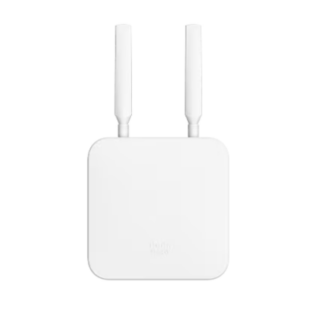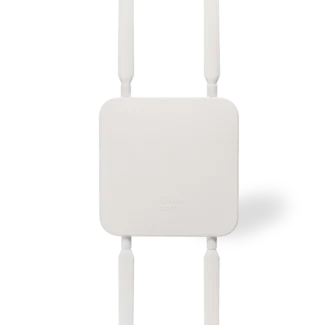Description
OVERVIEW
Connectivity is critical for any organization that depends on reliable internet access in order to function. Wireless WAN connectivity options, such as cellular networks used to serve as a reliable backup internet uplink in the event of a primary uplink failure. However, with 5G providing wired like speeds, MG51 provides an alternative to wired connection, providing same day connectivity and simpler management via the Meraki dashboard.
The MG51 cellular gateway simplifies the path to wireless WAN connectivity over 5G and makes cellular a viable primary uplink option for many networks bypassing the necessity for wired circuits. The MG51 acts as a gateway to the internet cellular networks by converting 5G and LTE signal from a cellular provider to an Ethernet handoff, which can be used as an internet uplink for a variety of use-cases.
MG51 can work with any routing or switching device, Meraki or non-Meraki. With additional 802.3at compatibility, the MG can be placed anywhere and powered via power over ethernet (PoE) like any access point. This gives users the option for optimal physical placement for signal quality – a cornerstone for wireless WAN communications.
MG series and Meraki Cloud Management: A Powerful Combo
All Meraki devices are managed via the Meraki cloud, with an intuitive browser-based interface. The MG series are self-configuring and managed over the web, and can be rapidly deployed at remote locations without any assistance from end-users.
Meraki Cloud services monitor all devices 24×7 and deliver real-time alerts if any devices encounter a problem. Remote diagnostics tools enable real-time troubleshooting through any web browser. New features and enhancements are delivered seamlessly over the web, so you never have to manually download software updates or worry about missing critical security vulnerability patches.
Product Highlights
- Meraki dashboard simplifies operation
- Built in 5G Sub 6GHz with CAT20 LTE failover connectivity
- Dual SIM support
- Supports 2 separate downstream router connections
- Small form factor
- PoE+ or DC powered
- IP67 rating
- Optional Patch antenna
Features
Dual SIM Cloud Managed 5G Cellular Gateway
Connectivity is critical for any organization that depends on reliable internet access in order to function. Wireless WAN connectivity options, such as cellular networks used to serve as a reliable backup internet uplink in the event of a primary uplink failure. However, with 5G providing wired like speeds, MG51 provides an alternative to wired connection, providing same day connectivity and simpler management via the Meraki dashboard.
The MG51 cellular gateway simplifies the path to wireless WAN connectivity over 5G and makes cellular a viable primary uplink option for many networks bypassing the necessity for wired circuits. The MG51 acts as a gateway to the internet cellular networks by converting 5G and LTE signal from a cellular provider to an Ethernet handoff, which can be used as an internet uplink for a variety of use-cases.
MG51 can work with any routing or switching device, Meraki or non-Meraki. With additional 802.3at compatibility, the MG can be placed anywhere and powered via power over ethernet (PoE) like any access point. This gives users the option for optimal physical placement for signal quality – a cornerstone for wireless WAN communications.
Features
- Built in 5G Sub 6GHz with CAT20 LTE failover connectivity
- Dual SIM support
- Supports 2 separate downstream router connections
- Small form factor
- PoE+ or DC powered
- IP67 rating
- Optional Patch antenna
Hardware
- Sleek, low profile form factor
- x1 CAT 20 cellular modem – up to 2 Gbps/300Mbps
- x2 nano SIM card slot
- x2 GbE ports
- Multi-surface mounting bracket for attachment to walls, ceilings, or poles
- IP67 rated for environments of all types
Power
Use cases
- Primary cellular connectivity
- Failover cellular connectivity
Cloud-based centralized management
- Managed centrally over the web
- Zero-touch, self-provisioning deployments
- Remote troubleshooting tools
- Secure, user-scheduled firmware updates
- Remote visibility of key cellular information: IMEI, ICCID, APN, RSRP, RSRQ
Cloud APIs
- All MG configuration settings executable via APIs
Use Cases
Note that the following use-cases refer to using a Meraki MX appliance with the MG51 as a WAN uplink. However, the use-cases can also apply to non-Meraki devices.
-
Antenna placement where cellular coverage is best
-
Signal strength is key for cellular performance. The MG51 makes cellular a viable option in situations where high bandwidth or throughput is needed or locations where the MX is not necessarily the best location for a strong cellular signal . The separation of cellular antenna and MX expands cellular options for all networks, particularly for mid-range MXs mounted in a data center. The 4 x 4 DL MIMO is capable of supporting deployments that demands higher throughput capacity.
-
Primary WAN
-
Secondary WAN for Failover
-
Primary/Secondary WAN for SD-WAN
-
High Availability Uplink
What do I need?
You need a SIM card (or 2 to connect to an alternative carrier) with data for your region and you need to power the MG51 via PoE or local 12V adapter.
The output is an unfiltered internet feed on 1GbE ethernet cable. Plug this into the WAN port of your firewall.
The SIM card and contract are not provided.
Choosing between the MG51 and MG51E and the antennas
If you are technical, you can look at the antenna datasheets on the pages of this site.
However, in our opinion the choice is probably going to be down to how good your cellular signal strength is where you intend to mount or install your MG51/E. Remember you can mount either outside. Just think about how you are going to get the ethernet cable to it and provide the necessary power via PoE.
If the signal/s is/are good, then just get the MG51. It has excellent internal antennas that should cope well in most situations.
If the signal is not-so-good, opt for the MG51E. It comes with two external dipole (stick-like) antennas that you can angle to get the best of the signal available. If after you have tried that it doesn’t work so well, and you have sited it in the best place you can, then you can buy the patch antenna and plug it in instead of the dipoles. The patch antenna is a directional antenna designed to point towards the local cell tower to make the most of the signal available.
If the cellular signal is awful opt for the MG51E and go straight for the patch antenna, or two of them optimised for your two SIMs. Mount them outside. The patch antenna is a directional antenna designed to point towards the local cell tower(s) to make the most of the signal(s) available.
MG51E: Non-Meraki Antenna not supported
Note: Non-Meraki antennas are not supported. The socket is a reversed RP-SMA that is designed to detect the official MG smart dipole antennas and smart patch antenna. Usage of non-Meraki accessories may damage the MG and degrade performance. The Cisco Meraki antennas are designed for the maximum allowable gain without exceeding the EIRP for local regulatory domains on their supported bands.



